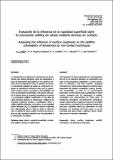Por favor, use este identificador para citar o enlazar a este item:
http://hdl.handle.net/10261/57009COMPARTIR / EXPORTAR:
 SHARE SHARE
 CORE
BASE CORE
BASE
|
|
| Visualizar otros formatos: MARC | Dublin Core | RDF | ORE | MODS | METS | DIDL | DATACITE | |

| Campo DC | Valor | Lengua/Idioma |
|---|---|---|
| dc.contributor.author | Miller, A. Z. | - |
| dc.contributor.author | Rogerio Candelera, Miguel A. | - |
| dc.contributor.author | Dionísio, A. | - |
| dc.contributor.author | Macedo, M. F. | - |
| dc.contributor.author | Sáiz-Jiménez, Cesáreo | - |
| dc.date.accessioned | 2012-10-01T11:44:57Z | - |
| dc.date.available | 2012-10-01T11:44:57Z | - |
| dc.date.issued | 2012 | - |
| dc.identifier.citation | Materiales de Construcción 62(307): 411-424 (2012) | es_ES |
| dc.identifier.issn | 0465-2746 | - |
| dc.identifier.uri | http://hdl.handle.net/10261/57009 | - |
| dc.description | 14 páginas, 7 figuras, 1 tabla, 23 referencias. | es_ES |
| dc.description.abstract | [EN]: The importance of stone colonisation by microorganisms has led to an extensive literature on mechanisms and rates of physicochemical degradation of stone surface, both in laboratory and field contexts. Biological colonisation of a stone surface depends on intrinsic stone parameters like mineral composition, texture, porosity, and permeability, as well as on environmental parameters. In the present study, quantification of stone surface roughness and its relationship to epilithic colonisation was demonstrated for three types of limestones throughout non-destructive techniques, namely optical surface roughness instrument and digital image analysis. According to the roughness average (Ra) and mean roughness depth (Rz) determined for Ançã limestone, Lioz limestone and Lecce stone, it can be concluded that great surface roughness stones render them prone to microbial colonisation. | es_ES |
| dc.description.abstract | [ES]: La colonización de la piedra por microorganismos ha generado una extensa literatura sobre los mecanismos y tasas de degradación fisicoquímica de las superficies pétreas, tanto en laboratorio como en estudios de campo. La colonización biológica de piedra de construcción depende de parámetros intrínsecos como son su composición mineral, textura, porosidad y permeabilidad, así como de parámetros ambientales. Este estudio demuestra la relación entre la rugosidad superficial de la piedra y la colonización epilítica, cuantificada en tres tipos de caliza mediante técnicas no destructivas: medida de la rugosidad superficial usando un perfilómetro óptico y análisis digital de imágenes. De acuerdo con la rugosidad media aritmética (Ra) y la amplitud media de rugosidad (Rz), determinadas para la caliza de Ançã, la caliza de Lioz y la piedra de Lecce, puede concluirse que las piedras con alta rugosidad superficial son más propensas a la colonización microbiana. | es_ES |
| dc.description.sponsorship | Este estudio ha sido financiado por el Ministério da Ciência, Tecnologia e Ensino Superior, Portugal, con una beca postdoctoral (SFRH/BPD/63836/2009) y parcialmente financiado por CEPGIST-FCT subproyecto DECASTONE. Este trabajo recibió también financiación del Programa de Financiamento Plurianual de Unidades de Investigação da FCT, financiado por la Unión Europea, FEDER, y fondos nacionales de la República Portuguesa. Este es un trabajo del proyecto CONSOLIDER CSD2007- 00058. This study has been financed by the Ministério da Ciência, Tecnologia e Ensino Superior, Portugal, with a postdoctoral grant (SFRH/BPD/63836/2009) and partially financed by CEPGIST-FCT subproject DECASTONE. This work also received support from Programa de Financiamento Plurianual de Unidades de Investigação da FCT, financed by European Union, FEDER, and national budget of the Portuguese Republic. This is also a paper from the project CONSOLIDER CSD2007-00058. | es_ES |
| dc.language.iso | spa | es_ES |
| dc.language.iso | eng | es_ES |
| dc.publisher | Consejo Superior de Investigaciones Científicas (España) | es_ES |
| dc.rights | openAccess | es_ES |
| dc.subject | Stone | es_ES |
| dc.subject | Surface roughness | es_ES |
| dc.subject | Ephilitic colonisation | es_ES |
| dc.subject | Non-destructive techniques | es_ES |
| dc.subject | Piedra | es_ES |
| dc.subject | Rugosidad superficial | es_ES |
| dc.subject | Colonización epilítica | es_ES |
| dc.subject | Técnicas no destructivas | es_ES |
| dc.title | Assessing the influence of surface roughness on the epilithic colonisation of limestones by non-contact techniques | es_ES |
| dc.title.alternative | Evaluación de la influencia de la rugosidad superficial sobre la colonización epilítica de calizas mediante técnicas sin contacto | es_ES |
| dc.type | artículo | es_ES |
| dc.identifier.doi | 10.3989/mc.2012.64410 | - |
| dc.description.peerreviewed | Peer reviewed | es_ES |
| dc.relation.publisherversion | http://dx.doi.org/10.3989/mc.2012.64410 | es_ES |
| dc.identifier.e-issn | 1988-3226 | - |
| dc.type.coar | http://purl.org/coar/resource_type/c_6501 | es_ES |
| item.cerifentitytype | Publications | - |
| item.openairecristype | http://purl.org/coar/resource_type/c_18cf | - |
| item.grantfulltext | open | - |
| item.openairetype | artículo | - |
| item.fulltext | With Fulltext | - |
| item.languageiso639-1 | es | - |
| item.languageiso639-1 | en | - |
| Aparece en las colecciones: | (IRNAS) Artículos | |
Ficheros en este ítem:
| Fichero | Descripción | Tamaño | Formato | |
|---|---|---|---|---|
| Assessing the influence.pdf | 1,11 MB | Adobe PDF |  Visualizar/Abrir |
CORE Recommender
SCOPUSTM
Citations
13
checked on 21-abr-2024
WEB OF SCIENCETM
Citations
11
checked on 29-feb-2024
Page view(s)
376
checked on 23-abr-2024
Download(s)
294
checked on 23-abr-2024
Google ScholarTM
Check
Altmetric
Altmetric
NOTA: Los ítems de Digital.CSIC están protegidos por copyright, con todos los derechos reservados, a menos que se indique lo contrario.
